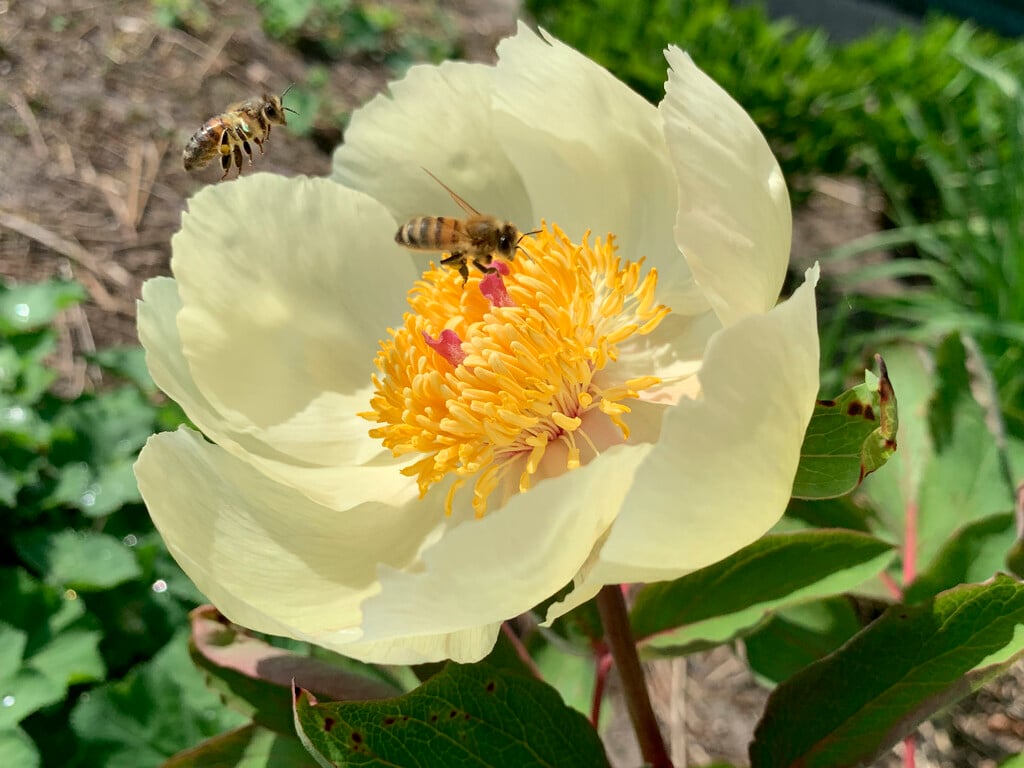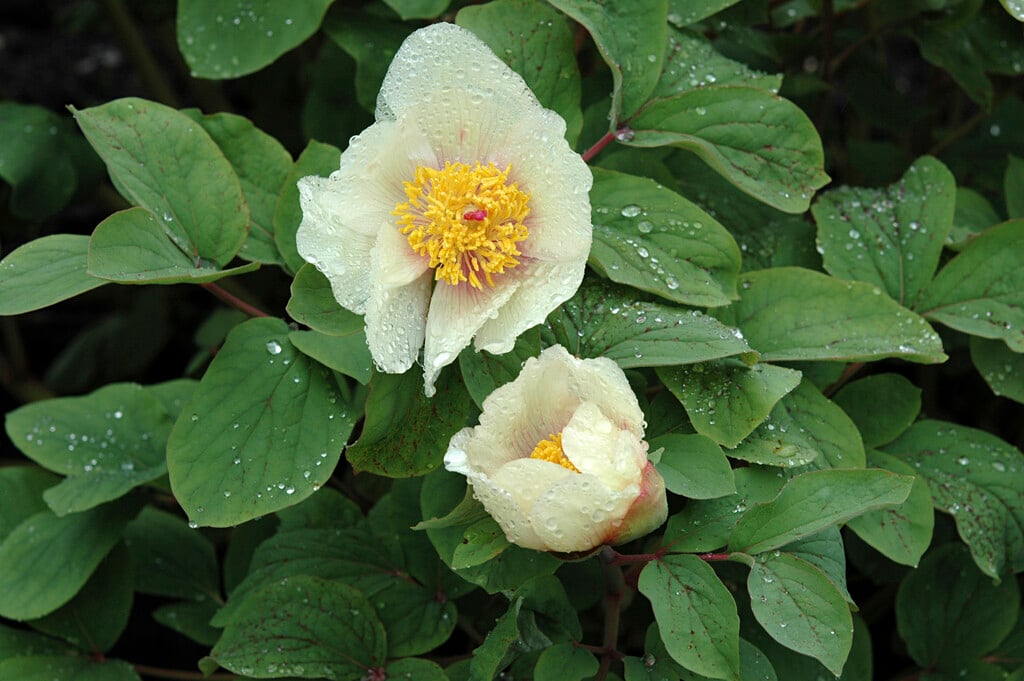Paeonia mlokosewitschii

Mlokosewitch's peony
An herbaceous perennial to 60cm tall, with broad, bluish-green, divided foliage and bowl-shaped lemon-yellow flowers 10-12cm wide, with deep yellow stamens, in mid-spring
Size
Ultimate height
0.5–1 metresTime to ultimate height
2–5 yearsUltimate spread
0.5–1 metresGrowing conditions
Moisture
Moist but well–drainedpH
Alkaline, NeutralColour & scent
| Stem | Flower | Foliage | Fruit | |
| Spring | Yellow | Blue Green | ||
|---|---|---|---|---|
| Summer | Blue Green | |||
| Autumn | ||||
| Winter |
Position
- Full sun
- Partial shade
Aspect
West–facing or South–facing or East–facing
Exposure
Exposed or Sheltered Hardiness
H6Botanical details
- Family
- Paeoniaceae
- Native to GB / Ireland
- No
- Foliage
- Deciduous
- Habit
- Bushy
- Potentially harmful
- Pets (dogs, cats): Skin irritant. For further information and contact numbers regarding pets, see the HTA guide to potentially harmful plants
- Genus
Paeonia may be herbaceous perennials or deciduous sub-shrubs with large, divided leaves and showy large bowl-shaped flowers, usually in early summer
- Name status
Correct
- Plant range
- SE Europe to N Iran
How to grow
Cultivation
Grow in deep, fertile, moist, humus-rich soil. Slightly alkaline is preferable, but neutral and slightly acidic soils are suitable too. A position in full sun or partial shade is required. See Peony cultivation: herbaceous for further information.
Propagation
Propagate by seed in autumn or winter outdoors. Germination can take two or three years. Plants can also be propagated by division in autumn or early spring, just before the plant come back into growth. Aim to include one or several plump terminal buds with each division. The new plants can take two or three years to flower again as they dislike disturbance. It is also possible to take root cuttings in winter
Suggested planting locations and garden types
- Cottage and informal garden
- City and courtyard gardens
- Flower borders and beds
Pruning
Cut back the foliage at the end of the season
Pests
May be susceptible to leaf and bud eelworm and soil-dwelling swift moth larvae
Diseases
May be susceptible to a virus, honey fungus, Verticillium wilt, peony leaf blotch and peony wilt
Love gardening
Sign up to receive regular gardening tips, inspiration, offers and more
View our Privacy Policy
Get involved
The Royal Horticultural Society is the UK’s leading gardening charity. We aim to enrich everyone’s life through plants, and make the UK a greener and more beautiful place.

